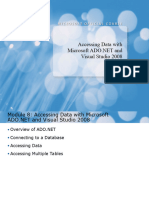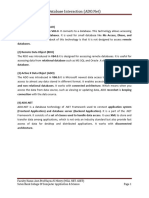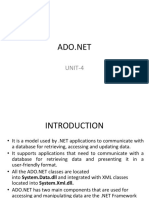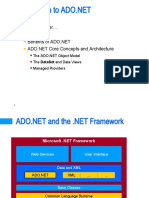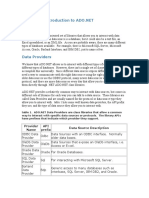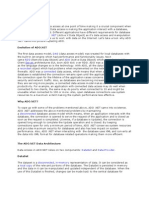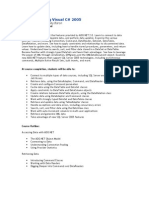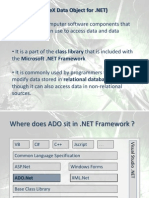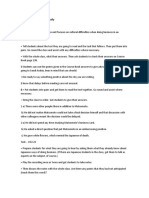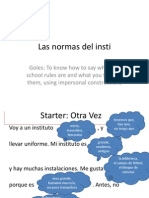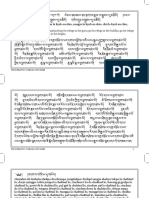100% found this document useful (1 vote)
340 views71 pagesIntroduction To
This document provides an introduction and overview of ADO.NET 2.0. It discusses connected objects like the Connection, Command, and DataReader objects for working directly with a database. It also covers disconnected objects like the DataSet and DataTable objects for working with data offline. The DataAdapter acts as a bridge between these connected and disconnected objects. It provides examples of using the Connection, Command, and DataAdapter objects to perform common data operations.
Uploaded by
api-3753962Copyright
© Attribution Non-Commercial (BY-NC)
We take content rights seriously. If you suspect this is your content, claim it here.
Available Formats
Download as PDF, TXT or read online on Scribd
100% found this document useful (1 vote)
340 views71 pagesIntroduction To
This document provides an introduction and overview of ADO.NET 2.0. It discusses connected objects like the Connection, Command, and DataReader objects for working directly with a database. It also covers disconnected objects like the DataSet and DataTable objects for working with data offline. The DataAdapter acts as a bridge between these connected and disconnected objects. It provides examples of using the Connection, Command, and DataAdapter objects to perform common data operations.
Uploaded by
api-3753962Copyright
© Attribution Non-Commercial (BY-NC)
We take content rights seriously. If you suspect this is your content, claim it here.
Available Formats
Download as PDF, TXT or read online on Scribd
/ 71












